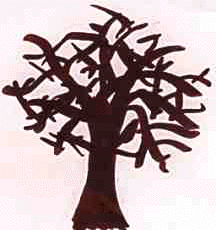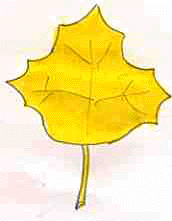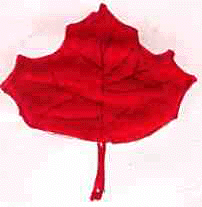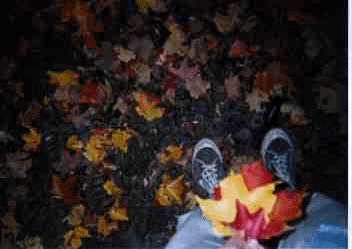
By Catherine B.
them in an enviro-friendly way?

By Catherine
B.
There are many ways to take advantage of Maple trees by....
1. Exerting the sap from
trunk in the early spring
to make Maple Syrup.
2. Using the trees as a source of respiratory relief.
 3. Taking advantage of
3. Taking advantage of
the shelter / protection they provide (without c utting them down)
4. Gathering the dead leaves for compost use.
1. Maple Syrup and the
 Process of
Creating it:
Process of
Creating it:
This is my driveway, which is
lined with Maple trees aged a
couple hundred years -- How
can I tell? The trunks are so fat
that no one can put their arms
around them.
For several years (not consec-
utively), my family has tapped the trees, and have had excellent results. Here is the process we used
to obtain Maple Syrup and candy.
Materials Needed:
here to here (click syrup bottle for picture)

![]()
When to start:
Tapping of trees begins
when there is a combination of 20 degrees at night and about 40 degrees
(Farenheit) during
the day. This is usually around the beginning of March.
Tree Preparation Process:
1. Find a maple tree(s) that has a fairly wide trunk. It is important to use an older tree. Time changes everything. Older maples are more mature and bear more sap. A young tree should not be tapped.
2. Find a bit for the auger that is about the same size as the tap and attach it.
3. Drill a hole into the tree approximately waist height. Drill until the bit is pretty far in and/or the wood shavings are wet. Exert the drill.
4. All that is necessary now is to take the tap and put the narrow end in. Give it a few whacks with the hammer so it is firm. See diagram.
5. Attach the bucket sturdily with wire. Remember, the bucket will get heavy. Make sure that the sap can drip easily into the pail.
Syrup Preparation:
After a day or so, usually just overnight, the bucket should be full. Don't be alarmed if the contents look like nothing more than water. If you taste it, the liquid will be only slightly sweet.
1. Once inside, strain the sap so any bits will be removed.
2. Pour into a big pot and set for a medium-high boil on the
stove. Do not cover.
3. Be patient! There is
no such thing as a free lunch! Eventually the sap will evaporate leaving a
thicker and thicker substance - the syrup. The more you cook, the thicker
it will be. If you cook for a really long time, the syrup will crystallize,
hence Maple candy.

That's about it. Some things to remember:

2. Maples; a source of respiratory relief
Maples,
like all trees, produce oxygen -- necessary for breathing. It is a well known
fact that people who live in the country have fresher air to breath. This
is because there is a lack of pollution and a surplus of trees.

3. Maple treehouses:
Some people have built their homes in living trees, not from the wood of a cut down tree. Many kids build treehouses to play in. Large old Maples are good trees to use since the limbs are broad and somewhat horizontal in structure. There is a diverse amount of animals that use maples for their habitat, too.
4. Dead leaves as compost
When
the leaves fall to the ground in autumn, a good use for them is to cover a
bare garden bed. This protects the ground from being ruined. If you go into
the woods a rake away the dead leaves, you'll notice the dark rich soil beneath.
Unfortunately, leave decomposing takes a long time to occur, but if they
are ground up, the period is shorter.

Photosynthesis
causes
the leaves to change
color.
By C. Brown